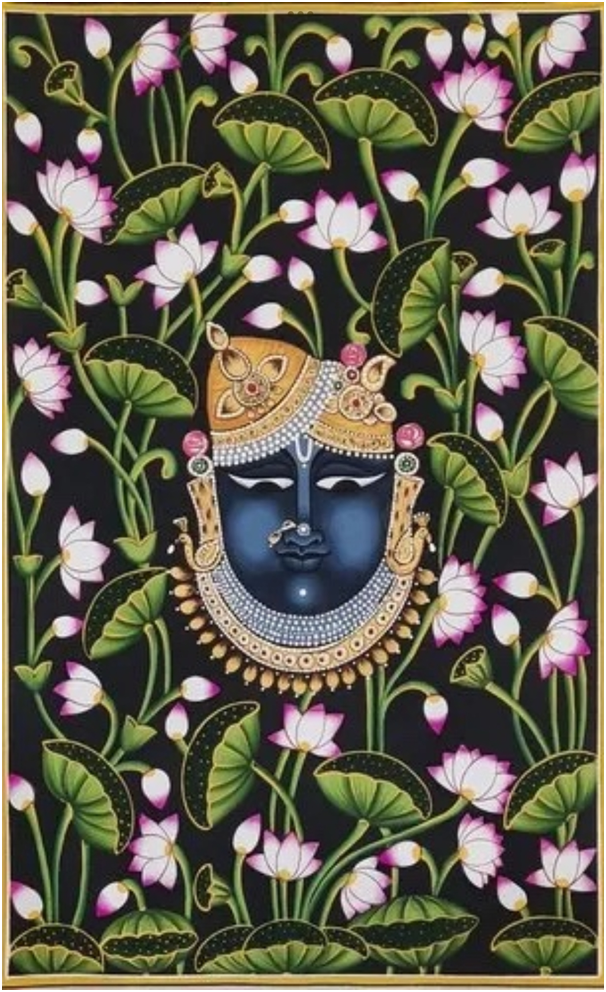Pichwais
Context: Pichwai or ‘pichvai’ is one of the most spectacular and ancient forms of art with its origin being the land of culture i.e., India. Pichwai paintings have their roots in Nathdwara Rajasthan. The stunning art form is a 400-year-old art one which was created depicting the beautiful life of Lord Krishna.
More on the News
- Pichhwai literally meaning ‘that which hangs from the back’ are large devotional Hindu painted pictures, normally on cloth, which portray Krishna.
- They are mainly made to hang in Hindu temples of the Pushtimarg devotional tradition, especially the Shrinathji Temple in Nathdwara, Rajasthan, built around 1672.
- The purpose of pichhwais, other than artistic appeal, is to narrate tales of Krishna to the illiterate.
- Temples have sets with different images, which are changed according to the calendar of festivals celebrating the deity. Pichhwai is the Sub- Style of Nathdwara Painting
Nathwara Painting
- Nathdwara Painting refers to a painting tradition and school of artists that emerged in Nathdwara, a town in Rajasthan.
- Nathdwara school is a subset of the Mewar school of painting and is seen as an important school in the 17th and 18th-century miniature paintings.
- Nathdwara paintings are of different sub-styles of which Pichhwai paintings are the most popular.
- Most works produced in this style revolve around the figure of Shrinathji as a manifestation of Krishna and refer to the incident of him holding the Govardhan hill on his last finger.
| Practice Question
1. What is Pichwai painting? Explain its role in tradition of bhakti? |




